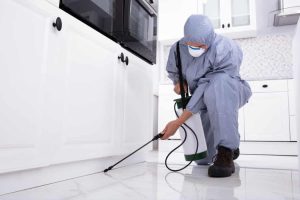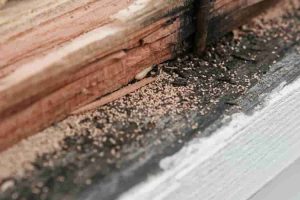Rodents can be more than just a nuisance; they may pose significant health risks and cause damage to our homes and businesses. Effective rodent control is not only about reacting to an infestation but also about preventative measures. When we notice signs of rodent activity, such as droppings or gnaw marks, it’s crucial to act swiftly. We understand that the marketplace offers a range of solutions, and choosing the best baits and traps for your situation can feel overwhelming.

Our experience tells us that the effectiveness of rodent baits and traps varies widely depending on the environment and the type of rodents we’re dealing with. For indoor use, we might opt for traps that ensure safety and hygiene, while outdoor infestations may require more robust and weather-resistant solutions. Understanding rodent behavior is key—we select baits that are enticing to the target species and place them strategically to maximize our chances of control. It’s not always about the strength of the trap, but how and where it’s used.
We stay informed on the most recent advancements in pest control to address rodent issues effectively. From traditional spring traps to modern electronic solutions and from natural deterrents to the latest in rodenticide formulations, we carefully consider all available options. Our aim is to implement a control method that is both effective and responsible, ensuring that non-target species are safe and environmental impact is minimized. By sharing our expertise, we strive to empower individuals with the knowledge and tools needed for successful rodent control.
Understanding Rodent Behavior
When we address rodent problems, it’s crucial that we first understand the behaviors specific to rodents like rats and mice. This knowledge allows us to effectively target and manage these pesky invaders.
Identifying Common Rodents
Rats: Typically, we find two prevalent types of rats: the Norway rat and the roof rat. Norway rats, also known as brown rats, are hefty and burrow underground, whereas the sleeker roof rats prefer to nest higher up.
Mice: The house mouse is the most common species that we deal with. These small rodents are greyish-brown, skilled climbers, and can squeeze through openings as small as a dime.
Nocturnal Activity and Nesting Habits
Nocturnal: Most rodent activity occurs at night. This nocturnal behavior is particularly evident in rat infestations as they search for food and materials for nesting.
Nesting: Rats and mice build their nests in secluded areas with easy access to food and water. Their nesting habits often cause problems in our homes and businesses, as they can create them in walls, attics, and other undisturbed locations.
Choosing the Right Bait and Trap
When managing a rodent problem, the successful elimination hinges on selecting the most effective bait and trap configuration. We’ll dissect the types of baits, compare different traps, and discuss how to use them safely.
Types of Baits and Their Effectiveness
- Rodenticides: Typically, rodenticides are highly effective as these poisons are designed to attract and eliminate rodents. For rats, anticoagulant baits may take a few days to work but are generally reliable.
- Natural Baits: Foods like peanut butter or cheese are often used effectively with snap traps or live traps, as they offer a scent that rodents find hard to resist.
| Bait Type | Effectiveness | Best Used With |
|---|---|---|
| Rodenticides | High | Bait Stations |
| Natural Baits | Medium | Snap Traps, Live Traps |
Comparing Various Traps
- Snap Traps: These are the classic, spring-loaded traps that can quickly kill rodents with a metal bar.
- Glue Traps: While simpler to use, glue traps entail a more inhumane approach that may not be instant and can be messy.
- Live Traps: These capture rodents alive for release elsewhere, a humane choice but requiring more follow-up from the user.
- Electronic Traps: A modern solution that delivers a lethal shock to rodents, combining effectiveness with ease of use.
| Trap Type | Kill/Non-Kill | Ease of Use |
|---|---|---|
| Snap Traps | Kill | Easy |
| Glue Traps | Kill | Easy |
| Live Traps | Non-Kill | Moderate |
| Electronic Traps | Kill | Easy |
Safety Considerations for Bait and Trap Use
When deploying traps and baits, our safety and the safety of others, including pets and non-target wildlife, must be a priority.
- Bait Stations: Sealed stations that house bait, minimizing the risks to children and non-target animals.
- Placement: Traps and baits should be placed in areas less accessible to non-target animals and children.
- Handling: Wear gloves when placing traps and baits, and dispose of rodent carcasses appropriately to prevent disease transmission.
Remember, always follow manufacturer instructions and local regulations when handling rodenticides and traps for achieving safe and successful rodent control.
Strategic Placement and Use of Traps
In the fight against rodents, the way we set and place traps is just as important as the traps themselves. Achieving maximum effectiveness requires a detailed strategy and understanding of rodent behavior.
Placement Strategies for Maximum Efficiency
When setting traps, it’s crucial to consider the natural pathways rodents are likely to frequent. They typically run alongside walls and may use overgrown vegetation or debris as cover. To exploit this behavior, we place traps perpendicular to the walls, with the trigger section facing the wall. This increases the chances of intercepting rodents as they scurry along their routes.
Key Points to Consider for Trap Placement:
- Location: Identify active rodent paths by looking for droppings and grease marks.
- Frequency: Set multiple traps to increase the interception rate.
- Convenience: Use easily accessible locations for straightforward monitoring and trap maintenance.
Sealing Entry Points and Removing Food Sources
One of the most effective ways to complement our trapping efforts is to seal entry points. Using a 1/4″ x 1/4″ metal mesh can be particularly effective in preventing rodents from entering the premises. We check for gaps around doors, windows, and where utility lines enter the building and seal these areas diligently.
Another critical action is to limit food availability, which discourages rodent activity around the traps:
- Remove Food Sources: Store food in sealed containers and dispose of waste properly.
- Sanitation: Regularly clean areas where food is prepared and consumed.
By addressing these issues, we limit the factors that attract rodents, making our traps more enticing as one of the few food sources available.
Health Risks and Environmental Considerations
When addressing rodent control, we must consider the health risks and environmental impact. Our approach should reflect a balance between effectiveness and safety for us, our pets, and wildlife.
Understanding Risks Associated with Rodent Infestations
Rodents are known to transmit diseases such as hantavirus, leptospirosis, and salmonellosis, posing significant health risks. Their presence can lead to contamination of food sources and property damage through gnawing and nesting behaviors.
Minimizing Risk to Non-Target Animals and Humans
Choosing the right bait and trap is crucial to protect non-target animals and humans from accidental harm. We should employ targeted control methods and place traps carefully to avoid unintended injuries to pets and wildlife.
Adopting Targeted and Non-Toxic Approaches
Non-toxic methods reduce the risk of secondary poisoning and environmental contamination. We advocate for non-toxic solutions like ultrasonic devices and natural repellents to deter rodents while safeguarding our ecosystem.
On-Time Service

5 STAR SERVICE BASED ON 100+ GOOGLE REVIEWS
PET & FAMILY FRIENDLY TREATMENT

ALL YEAR-ROUND PROTECTION
Take Back Control Now
8
REASON TO CHOOSE SAFE PEST CONTROL
- Guarantee protection all year-round
- 30 Years Collective Experience
- An impeccable reputation across Sydney's Suburbs
- Certified treatments & written Warranty On all work carried out
- Family Owned & Operated
- Rated #1 Pest Control In Sydney NSW
- No Mess, No Smell
- Family & Pet Friendly Treatments
REQUEST A QUOTE








